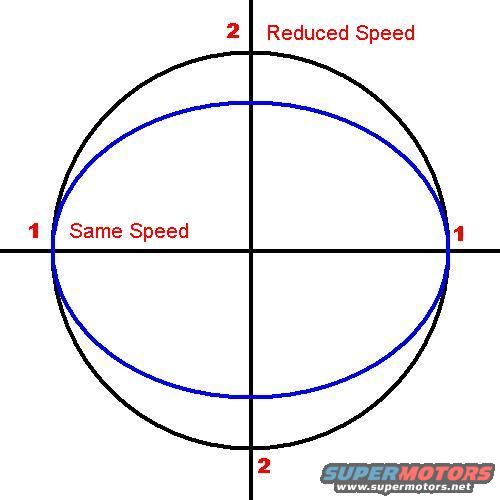|
|
 ujoint-motion.jpg | Hits: 6442 | Posted on: 1/12/05
| View Low-Res
ujoint-motion.jpg | Hits: 6442 | Posted on: 1/12/05
| View Low-Res
When a cross-type U-joint (Hooke's joint, Cardan joint) is flexed & rotated, the output side of the shaft (indicated by the blue ellipse which represents the path of the U-joint caps in that shaft) will experience a reduction in angular velocity relative to the input side twice per revolution, due to the reduced effective radius of rotation. As the output caps become perpendicular to the flex angle, their angular velocity becomes equal to the input; as they approach alignment with the flex angle, their angular velocity approaches its minimum (given by V'=V x [0.5+0.5 x sinˇ], where V' is the angular velocity of the output shaft, V is the angular velocity of the input shaft, & ˇ is the flex angle). This is true for each U-joint in the shaft, but having the ultimate output parallel to the input & all pairs of joints throughout the shaft system in phase (first joint's output caps joined to next joint's input caps) will result in constant velocity between the input & ultimate output, ignoring the fluctuations induced by the mass of the shaft system.
|